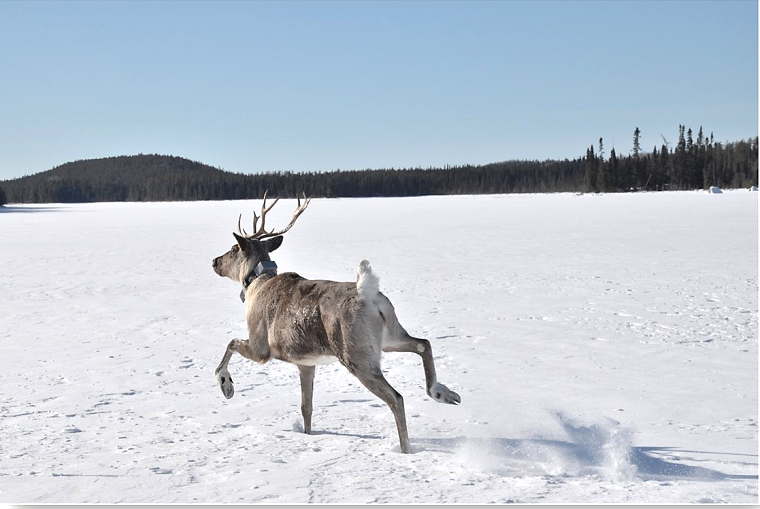Caring for Caribou: Understanding How Logging Affects Survival of a Threatened Species
Barbora Hucik
6 July 2020

It is hard to be a woodland caribou in Northern Ontario. They must clamber through marshes and bogs in summer and deep snow in winter, living off nutrient-sparse lichen when the temperatures plunge. The odds of survival are not in their favour, and human activities are threatening to tip the balance further.
“Caribou prefer to dwell in mature coniferous forests, but commercial logging shifts the landscape to a younger, regenerating forest that favours competitors such as moose, and predators such as wolves,” explains John Fryxell, a professor in the Department of Integrative Biology and executive director of the Biodiversity Institute of Ontario
Understanding exactly how human disturbance impacts caribou survival is critical to conserving this culturally and ecologically important species, says Fryxell, and can help the forest industry develop more sustainable logging plans.
With a large team of university and government collaborators, Fryxell set out to determine the influence of the environment on the survival rate of woodland caribou, a species listed as threatened in Ontario. The results of their study, published in the Journal of Wildlife Management, showed that landscape characteristics can accurately predict the survival of a caribou population.
The study was based on data collected from 122 adult female caribou over three years from two locations in Northern Ontario. The first location, Nakina, has been the site of logging for many decades, while the second location, Pickle Lake, remains undisturbed by human activity. Caribou in both locations were tracked using GPS radio collars and video cameras, which allowed researchers to retrace the caribou’s steps to try and understand how the animals made decisions as they moved about their environment.
The team also paid close attention to factors such as the surrounding landscape, presence of predators, and availability of food. The undertaking was “kind of like a military operation,” says Fryxell, with team members “chasing wolves and moose and counting lichen on hands and knees”.
They used the data to develop a model called a population viability analysis, or PVA, which can be used to predict growth in a specific population of caribou based on the local environment.
The model revealed that caribou populations located in areas with a history of commercial forestry have lower annual growth rates than those in undisturbed area, and the difference is heavily linked to changes in wolf density.
The study brought together a diverse team from different fields that are not necessarily used to working with each other, notes Fryxell. “Sometimes you have to put aside some of your personal interests, and it was quite amazing to see the degree to which people could pull together for a common goal.”
Fryxell sees this research as part of a three-phase program. The first phase, which includes field work, data collection and modelling, is now complete. The second phase will involve consulting with citizens, members of the forestry industry and wildlife biologists to develop more sustainable caribou management policy. In third and final phase, Fryxell hopes to see the model developed in this study applied to an experimental management program – ideally within the next few years.
Conserving threatened or at-risk species is almost always fraught with social, economic and ecological considerations. While much work remains when it comes to protecting Ontario’s woodland caribou, the team’s efforts provide a valuable tool to help bring sustainable management of this iconic species one step closer.
This study was funded by the Forest Ecosystem Science Cooperative, Ontario Ministry of Natural Resources and Forestry, Natural Sciences Engineering Research Council of Canada, National Research Council of Canada, Canada Ministry of the Environment, W. Garfield Weston Foundation, Wildlife Conservation Society of Canada and NRCan-Canadian Forest Service.
Read the full study in the Journal of Wildlife Management.
Read about other CBS Research Highlights.